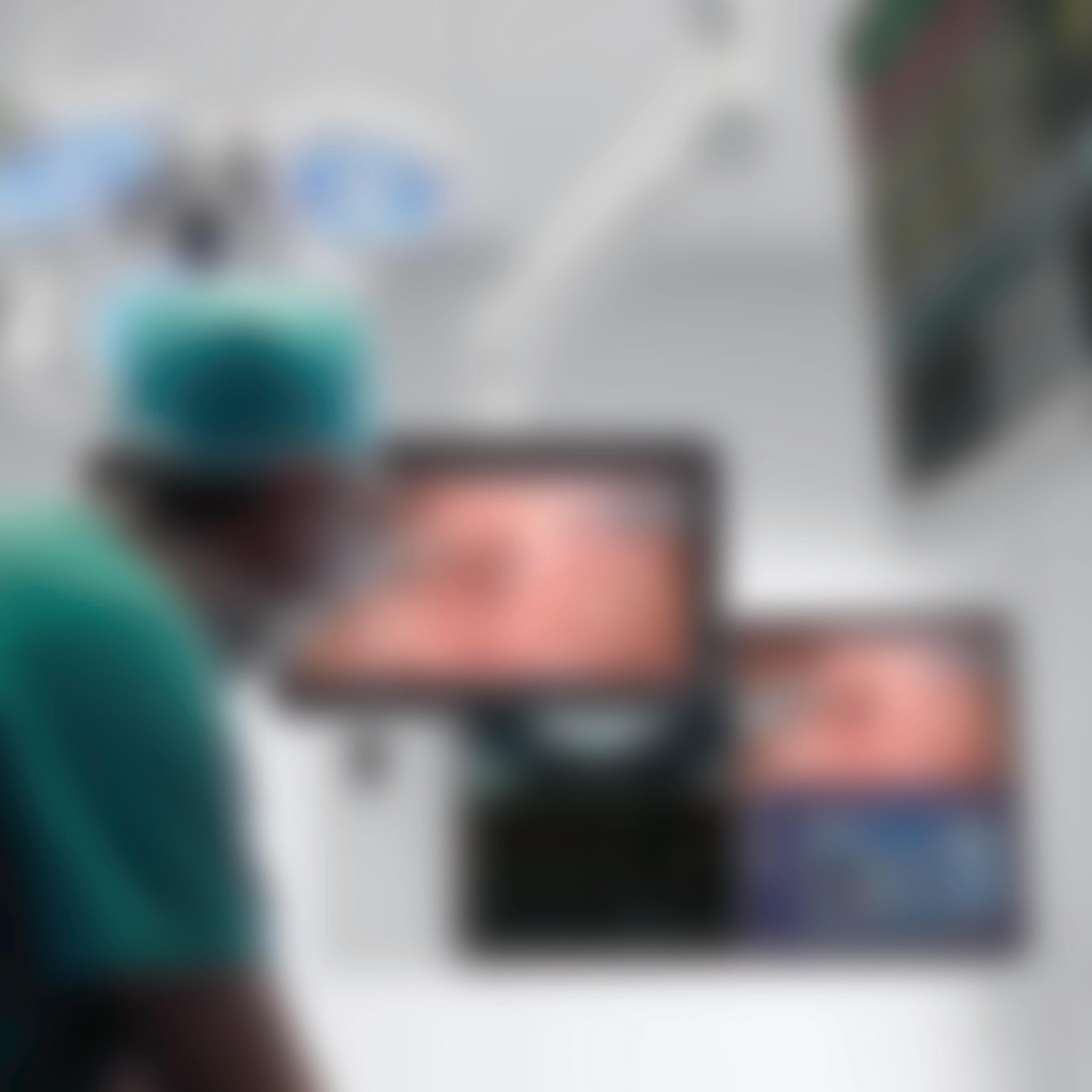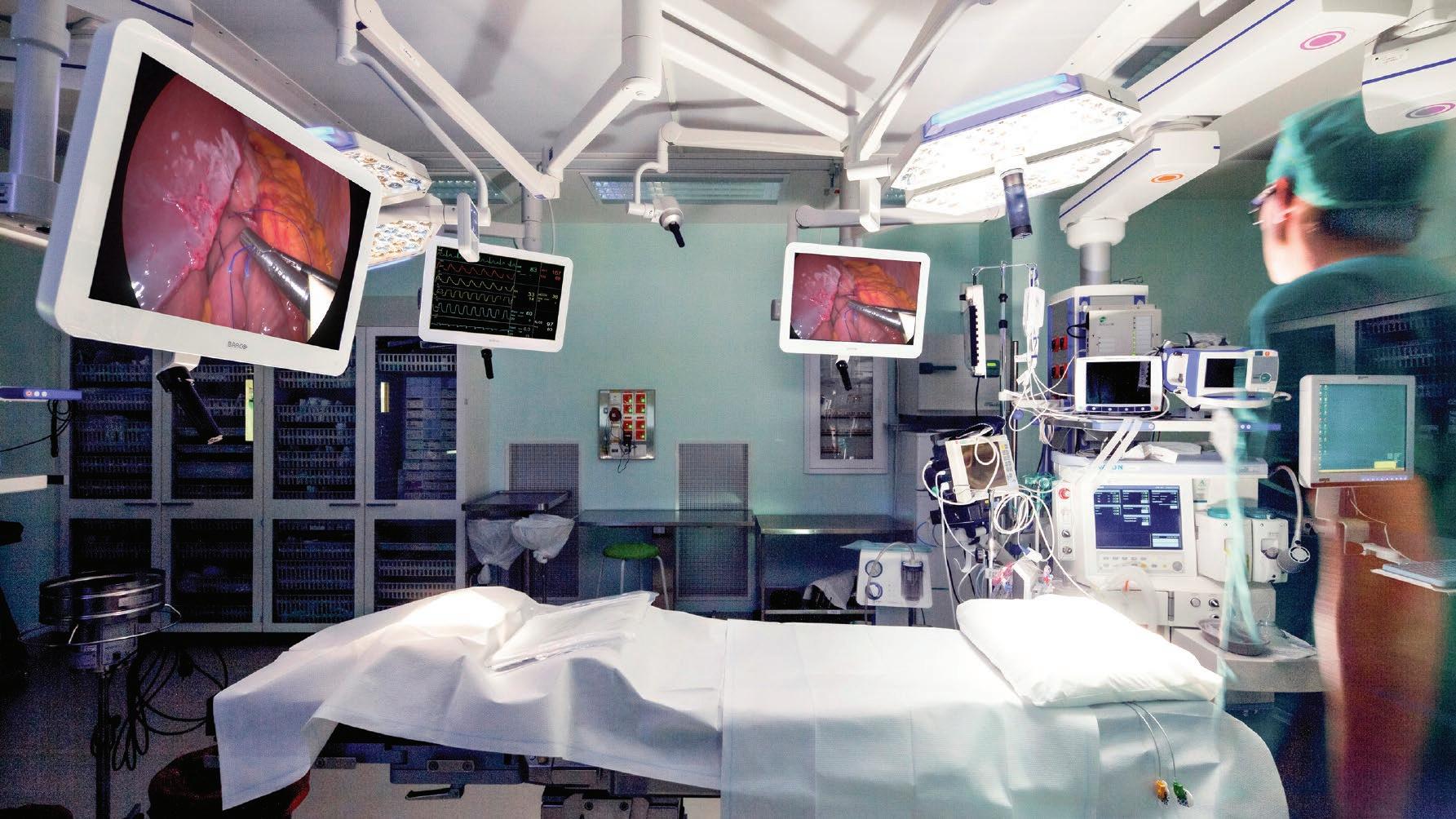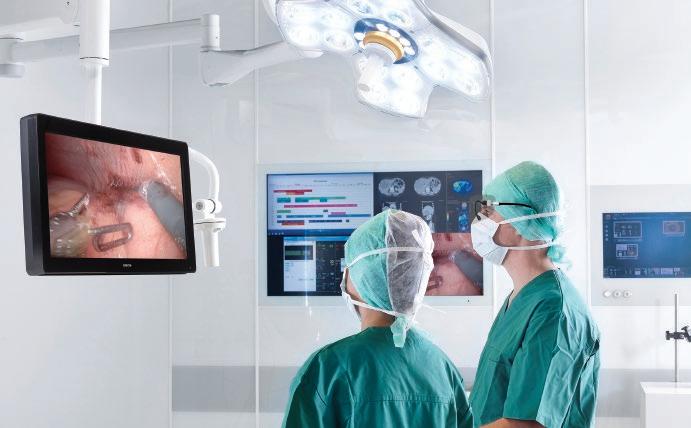
11 minute read
Five Ways Digital Technology Can Improve Operating Room Productivity and Efficiency
from Hospital Reports – Improving Operating Room Efficiency and the Role of Digital Technology – Barco
Barco
Businesses worldwide have embraced digital transformation. In the past decade, many organizations have ramped up their digital efforts in order to overhaul their business processes and improve the customer experience. The same can be said of the operating room (OR). As in other industries, the OR has not introduced digitization for digitization’s sake, but rather to reduce complexity, simplify workflows, and increase efficiency and productivity of the OR staff.
Beneluxpark 21, 8500 Kortrijk Belgium +32 56 233211 info@barco.com www.barco.com
Technology has always been a driver of productivity and efficiency. But can digital technology also make this happen in the OR?
First and foremost, let’s define what efficiency and productivity means for the OR. • Efficiency is about improving patient satisfaction and reducing errors or postoperative complications. • Productivity relates to treating the maximum number of patients in order to increase hospital revenues. In many hospitals, surgical and interventional services already contribute to more than half of the hospital’s revenue, and this rate is going upi . Barco, a worldwide leader in visualization technology, has been supporting surgeons and OR staff to improve operating efficiency and to simplify workflows for several decades. In this article we’ll talk about five ways in which digital solutions can improve surgical teams’ productivity and efficiency, from OR preparation to patient turnover.
1. Reducing Setup and Preparation Time
Among other things, the productivity of surgical teams and the efficient use of the OR depends on easy and flexible scheduling of cases and on the time required for their preparation and technology setup. However, by bringing more technology into the OR, the setup and configuration before surgeries have become increasingly complex and time-consuming. As a result, it has become increasingly difficult to prevent case start delays, cancellations and long patient waiting lists.
Setting up the OR environment for a new patient should be simple and straightforward. A technology like IP-based video integration for the operating room, also called “OR-over-IP”, can reduce complexity in the operating room and reduce the preparation time. By offering a standard architecture, the OR-over-IP approach simplifies installation and reduces set-up time in the OR.
Barco’s Nexxis OR-over-IP platform makes it possible to share uncompressed, high-resolution video (and audio) in and between operating rooms. This technology has been specifically designed for integration into the digital OR. With Nexxis, adding new devices or switching sources works on a plug and play basis, and images can be displayed on any OR display connected through the network. To reduce clutter and complexity even more, all imaging sources can be brought together in the interventional control room on a single display, managed by a single keyboard and mouse. Among other things, the productivity of surgical teams and the efficient use of the OR depends on easy and flexible scheduling of cases and on the time required for their preparation and technology setup
4K UHD resolution display for referral imaging
2. Enabling Efficient Decisions and Streamlining Treatment
Working in an operating room can be stressful, hectic and physically demanding. One of the roles of digital technology in the OR is to enhance the surgical team’s working conditions, so they can operate in all comfort, make quick and accurate decisions, and reduce errors.
However, an OR that is crammed with equipment – navigation devices, machinecontrolled applications, PACS equipment, etc. – only adds to the stress levels of the OR staff. Again, a video-over-IP system like Nexxis allows the them to reduce the number of cables and devices and to create a much cleaner and comfortable working environment.
A video-over-IP system also makes it possible to centralize all available information and present it to the OR staff exactly where needed. With Nexxis, content can be positioned flexibly from display to display, from procedure to procedure, and according to the surgeon’s personal preference.
According to Dr. Peter Müller, Senior Physician, Trauma Surgery at Augsburg Hospital (Germany), it is this kind of equipment that makes life easier for the surgeons. The hospital uses Nexxis and Barco surgical displays. As such, it is able to manage the distribution to the OR displays individually, by a simple drag and drop action on a screen. “In the case of an arthroscopy, for example, I have a clear view of the site of the procedure, irrespective of where the arthroscopy cart is. In addition to the live image, I can look at the MRI image on the second monitor.”ii
Similar feedback comes from AZ Maastricht hospital (The Netherlands): “The success of our procedures in the hybrid operating room greatly depends on the flexibility of the system.
Near-patient surgical display

Nexxis is a very versatile, flexible system that allows us to see, use and switch images on any monitor in the OR, without disruption,” says Prof. M. de Haan, interventional radiologist. “The platform is clear and simple, so that we can easily connect and disconnect sources. Only the used sources are visible, which is a clear benefit,” adds Klaas Braat from the IT department. “Moreover, the image remains exactly the same, with no latency or compression – what you see is what you get.”iii
Ergonomic comfort also pertains to the quality of the images on which surgeons base their decisions. Medical images should be highly accurate, lossless (i.e. uncompressed so none of their original quality is lost in the translation to the screen), and they should come with minimum latency, so surgeons can maintain perfect handeye coordination.
3D visualization with passive glasses

Nexxis makes sure that high-resolution, uncompressed medical images are presented with pixel-perfect precision and with near-zero latency. In addition, Barco’s Full HD and 4K surgical displays make sure that images from endoscopic cameras, room and boom cameras, ultrasound, PACS and patient information, are rendered with razor-sharp precision, allowing surgeons to see details they wouldn’t have seen before. 3D endoscopic surgery is already a reality, especially with more complex cases that require an in-depth view. With Nexxis, the step towards 3D is a small one to take: with a simple software upgrade, already installed encoders can now take in the 3D source and send out a 2D and a 3D video stream on the network. This way, the 3D source can be shown on any surgical display in the OR, regardless whether it’s 2D or 3D.
3. Reducing Turnover Time
Patient turnover – the time between two consecutive patients – consists of cleaning the OR setup of the preceding patient and setting it up for the following case. With a technology setup that is too complex and time-consuming, patients as well as surgeons risk having to wait for the treatment to begin – a major source of dissatisfaction in the ORiv. In addition, all time that is lost on technology configuration leads to the OR being underutilized.
Another issue is that smaller operating rooms are often not designed to cope with the increasing amount of high-tech medical equipment today. This is also a cause for time-consuming rearranging and moving around of equipment, leading to an increased turnover time.
Decreasing turnover time between patients can pave the way for additional cases to be scheduled, leading to increased revenue for the hospital. Reducing the complexity of the technology setup is a first big step in that direction. With a flexible, IP-based video integration system, you can easily switch between configurations and procedures, add or remove devices, and reduce turnover time. With an IP-based system, there are less components to set up and worry about: less cables, but also less external converters, extenders or splitters.
With an increasing number of devices and cables, the OR risks becoming a complex hodgepodge of technology that is hard to maintain. Technicians not only have the task to increase the OR’s uptime as much as possible, but the maintenance work in and of itself needs to be done efficiently as well. Time spent on technical maintenance cannot be used for surgery.
For many years, operating rooms have relied on conventional audiovisual (AV) systems. However, ever-changing video formats, limited integration possibilities, and complex and nonfuture-proof cabling made OR maintenance a cumbersome affair. Complicated configurations of AV equipment were often not fit to meet the changing imaging requirements of the modern OR.
An IP-based video integration platform can make the job of maintenance personnel a lot easier. By using unified fiber cabling that connects directly to the devices, cable clutter can be reduced and errors during maintenance can be avoided.
VoIP platform for digital operating room

Maintenance professionals also like to schedule ahead. That’s why they value a digital OR that can smoothly evolve over time, along with the needs of the OR staff. With a networked solution based on a standard architecture, cabling can be laid in advance and new sources or devices can be added at any time, so OR upgrades can run quickly with limited disruption.
Barco Nexxis is ready for any new technology (e.g. 4K) as soon as the OR team is. Nexxis can integrate practically any signal type through ‘plug and play’. In addition, the system is scalable and flexible, and allows you to adapt as you need to and expand as you grow.
But the plug and play nature of the Nexxis platform also has the welcome side-effect that it can contribute to the economic viability of the OR. This is explained by Augsburg Hospital trauma surgeon Dr. Müller: “We cannot purchase an imaging modality for each OR – this would be too expensive as well as ineffective. Therefore, we share those devices between different ORs. Nexxis greatly facilitates this: all you have to do is connect the encoder, integrate it, plug it in with a single cable and it simply starts working.”v
5. Reducing Downtime Due to Equipment Problems
Usually, problem solving of OR equipment requires a lot of expertise. Finding the root cause of a technical problem, such as a faulty cable, may require a lot of time, knowledge and sometimes expensive measurement equipment. This is one of the reasons why equipment problems in the OR often lead to delays.
Finding errors in faulty equipment faster can be a way to reduce the time the OR is not used due to technology problems. To accomplish that, OR maintenance staff can make use of Barco’s NexxisCare cloud platform, which makes it possible to remotely monitor visualization infrastructure in the OR 24/7 to ensure everything is in top condition. With NexxisCare, operation room maintenance professionals can detect possible issues in a proactive way and schedule the necessary maintenance actions in time. NexxisCare constantly monitors a wide variety of system parameters and reports any anomalies before they become problematic.
A good demonstration of the power of the NexxisCare platform is the New Children’s Hospital in Helsinki (Finland). The hospital’s maintenance team had been suffering a long time with a quality problem in the hospital due to a bad fiber cable. But immediately after the installation of NexxisCare at the New Children’s Hospital, the platform detected several critical technical issues. Without NexxisCare, the hospital would have had to order an on-site investigation by a skilled technician. With the cloud platform, however, the maintenance team could see in a few mouse clicks where maintenance was needed.
But even with the cloud platform, the support of a human medical imaging expert in times of crisis, can be invaluable. With Barco’s Care maintenance and support services, customers always get priority support. OR professionals that step into this support program can be confident that their medical display systems are always up and running, ant that their medical images are always compliant with medical standards.
VoIP platform for digital operating room

OR-Over-IP is the Future
In an environment where the patient’s stakes are so high and where every minute literally means money, digital technology can help improve the productivity and efficiency of today’s already highly skilled top OR professionals. The OR of today and of the future is one where conditions are created that allow surgeons to do their best work, by delivering highly accurate images, and by providing the most ergonomic working conditions.
But technology continuously evolves and thus, the OR also needs to be easily adaptable and interchangeable to meet future requirements. Its environment must be flexible enough to accommodate the most recent technologies, such as 4K imaging, without having to shut down the current infrastructure. IP-based video integration, or the so-called OR-over-IP, is a solution that will support this expansion of technologies well into the future.
References:
ii
iii
iv
v https://www.brainlab.com/journal/5-big-trends-in-o-r-digitalization/ and https://www.ncbi.nlm.nih.gov/pmc/articles/PMC4944359/ https://www.barco.com/en/customer-stories/2014/q4/2014-11-12%20-%20klinikum%20augsburg https://www.barco.com/en/customer-stories/2013/q2/2013-06-10%20-%20az%20maastricht https://www.ncbi.nlm.nih.gov/pmc/articles/PMC2878989/ https://www.barco.com/en/customer-stories/2014/q4/2014-11-12%20-%20klinikum%20augsburg






